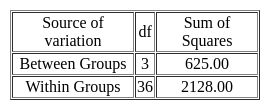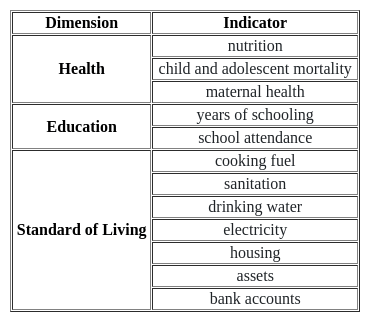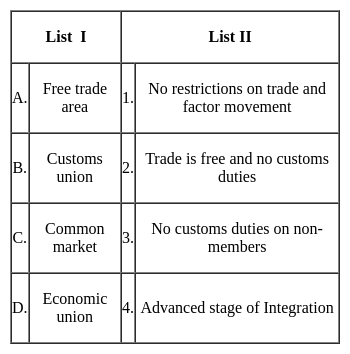UGC NET Paper 2 Economics Mock Test - 7 - UGC NET MCQ
30 Questions MCQ Test UGC NET Mock Test Series 2024 - UGC NET Paper 2 Economics Mock Test - 7
An investigator used ANOVA to compare four groups of students on numerical ability on the basis of a test. After analysis of raw scores, the following results were obtained:

The value of F-ratio would be approximate:

The value of F-ratio would be approximate:
In the process of drawing a random sampling which of the following process is in order of sequence?
| 1 Crore+ students have signed up on EduRev. Have you? Download the App |
Coefficient of variations of two distributions are 55 and 65 and their standard deviations are 22 and 39 respectively. Their arithmetic means are respectively.
Which ones of the following are quantitative control methods?
1. Bank Rate
2. CRR
3. SLR
4. Open Market Operations
The assumptions of rational decision making are:
(A) Preferences are not clear
(B) Preferences are not constant and stable
(C) Problem is clear and unambiguous
(D) No time or cost constraint exist
(E) Final choice will maximize pay off
Choose the correct answer from the options below:
Consider the following statements regarding Mission Antyodaya :
1. The Ministry of Social Justice and Empowerment is the nodal agency to take this mission forward.
2. The main objective is to ensure optimum use of resources by making gram panchayat the hub of a development plan.
Which of the statements given above is/are correct?
Consider the following statements about Central Board of Direct Taxes (CBDT).
(a) The Central Board of Direct Taxes is a statutory authority functioning under the Central Board of Revenue Act, 1963.
(b) It provides essential inputs for policy and planning of direct & Indirect taxes in India.
(c) The CBDT is headed by CBDT Chairman and it comprises of seven members.
(d) It is India’s official Financial Action Task Force unit.
Which of the following statements are correct about CBDT? Select the correct answer using the code given below:
Which of the following statements is/are true with respect to Moral Suasion?
1. It implies to pressure exerted by the RBI on the Indian banking system without any strict action for compliance of the rules.
2. It helps in restraining credit during inflationary periods.
3. Under moral suasion central banks can issue directives, guidelines and suggestions for commercial banks regarding reducing credit supply for speculative purposes.
4.It includes psychological means and informal means of selective credit control.
Under ______ market condition, firms make normal profits in the long run.
Directions: Read the given statements carefully and choose the correct option accordingly
Assertion (A): A progressive income tax is based on equi-marginal sacrifice.
Reason (R): Higher the income, lower will be the marginal utility of money for the tax payers.
Identify the type of curve based on given Characteristics:
1. This curve is a theory that states lower tax rates boost economic growth.
2. It underpins supply-side economics, Reaganomics, and the Tea Party’s economic policies.
3. It describes how changes in tax rates affect government revenues in two ways.
Find the correct code from the given below options.
|
16 docs|120 tests
|


 =
= 





















